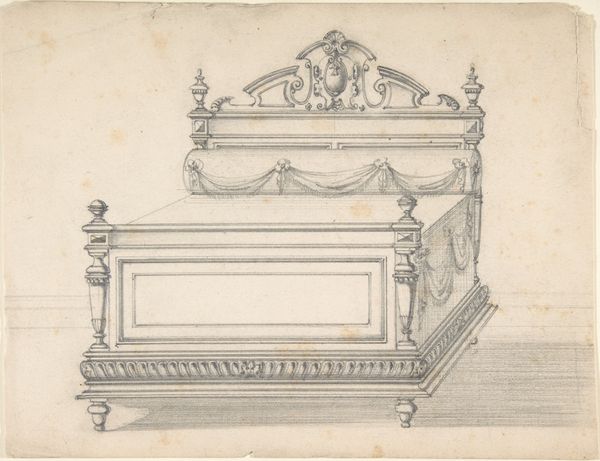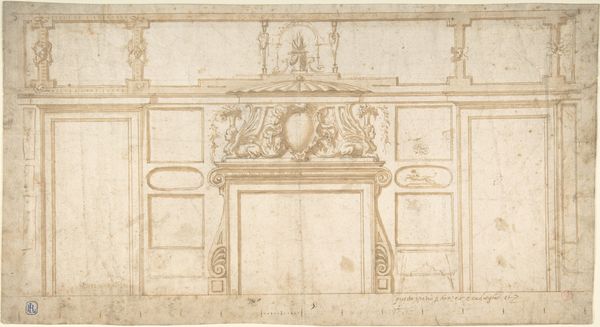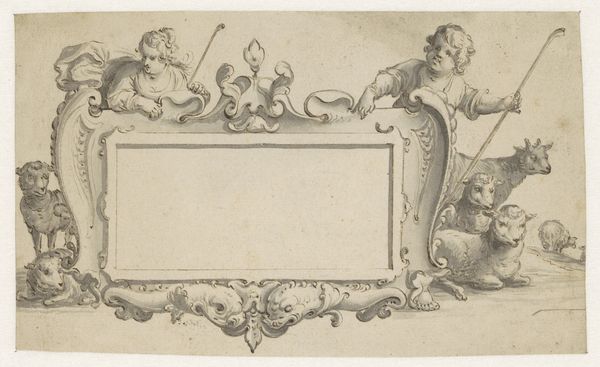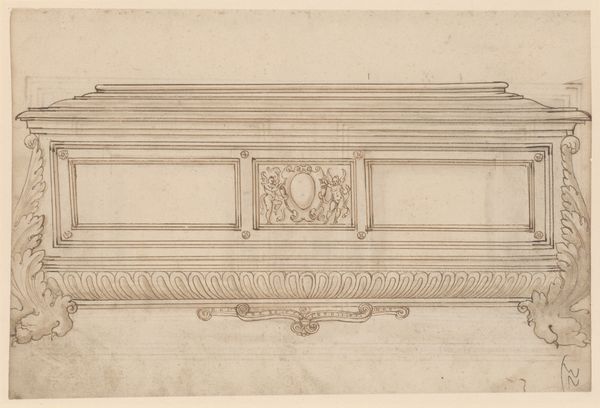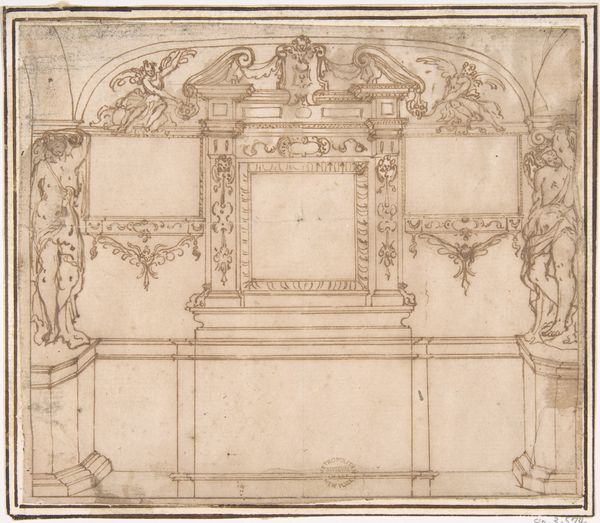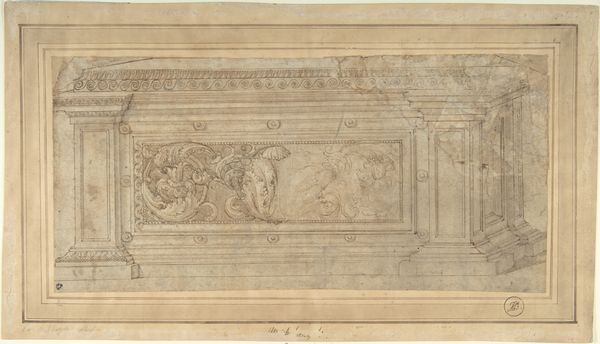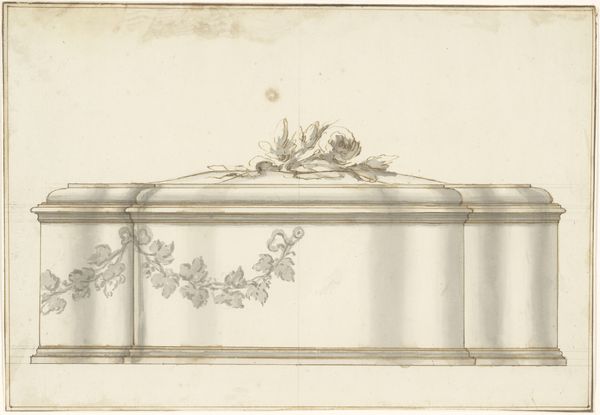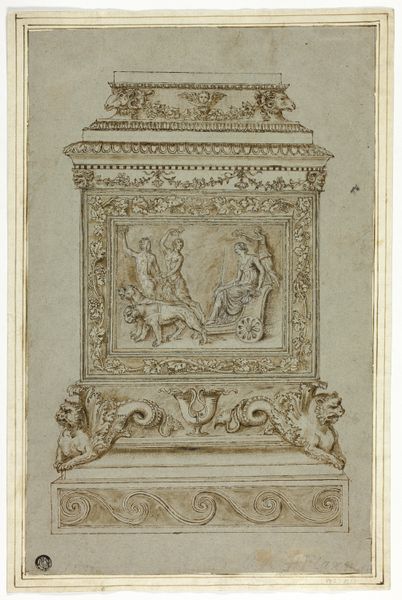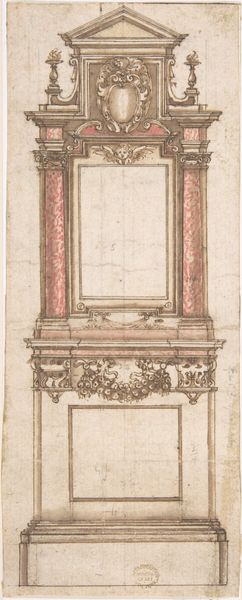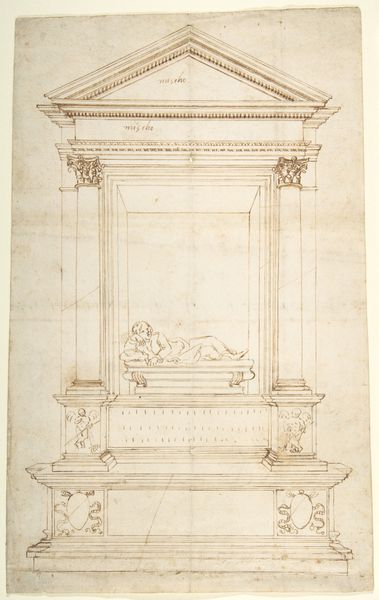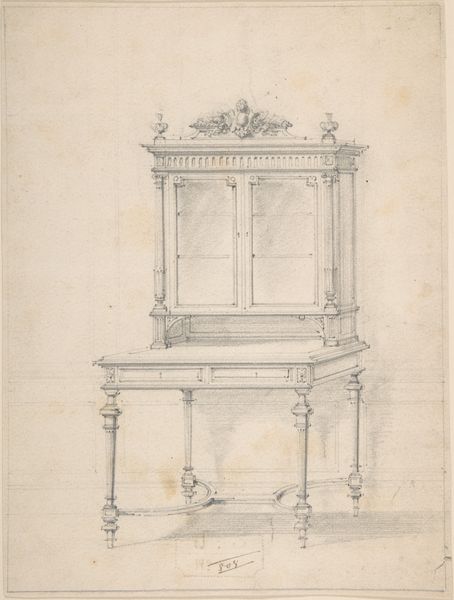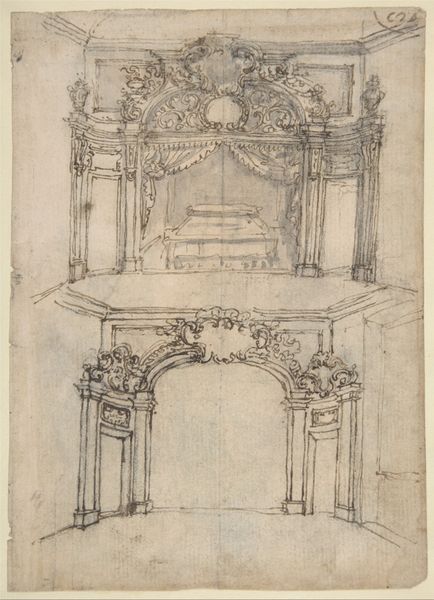
Design for an Casket heavily decorated Foliate Scrolls, Garlands and a Satyr Mask 1652 - 1725
0:00
0:00
drawing, print, pencil
#
drawing
#
allegory
#
baroque
# print
#
form
#
pencil
#
line
#
history-painting
#
decorative-art
Dimensions: sheet: 6 x 9 5/16 in. (15.2 x 23.7 cm)
Copyright: Public Domain
Curator: Here we have Giovanni Battista Foggini’s "Design for a Casket heavily decorated Foliate Scrolls, Garlands and a Satyr Mask," a drawing, potentially a print too, dating from between 1652 and 1725. Editor: My initial impression is of overflowing abundance. The florid, scrolling details are incredibly rich and suggest a sense of grand opulence, almost decadent. Curator: Absolutely. It speaks volumes about the Baroque era’s love of ornate embellishment and display, wouldn’t you say? A casket like this wouldn’t just hold something precious; it would BE a precious object, displayed in a grand interior. The creation of objects like these would create powerful networks for the artist. Editor: Exactly. It seems to me that this casket becomes a symbol of status and wealth, a testament to the owner's importance. And, tell me, what's the story behind incorporating the Satyr mask in the design? What does that image evoke in the broader context of art history? Curator: Ah, the Satyr. It's interesting how Foggini uses a pagan image, albeit one domesticated by classical tastes, in what could potentially become a funerary object, the juxtaposition revealing the culture of elites. Editor: A poignant clash indeed! The wild, Dionysian satyr tamed and transformed into an ornamental element. Its inclusion could be read as an invitation to acknowledge our primordial impulses even in the face of mortality, wouldn’t you agree? Curator: The sketch as an object allows for that tension between design, patronage, and workshop culture. One sees the social context when you consider how it would operate inside of the networks between artist and workshop in the Renaissance. It provides a record of a particular socio-economic dynamic between these two participants in artmaking. Editor: So beautifully put. It reminds us that symbols carry cultural memories, persisting even as their meanings evolve across generations and artistic movements. Curator: Precisely. Viewing Foggini's sketch, the decorative casket it displays really serves to help you reflect on broader social patterns of artistic production at the time. Editor: Indeed, the power of an image lies not just in what it depicts, but in how it resonates through time and human experience.
Comments
No comments
Be the first to comment and join the conversation on the ultimate creative platform.
